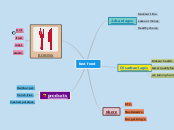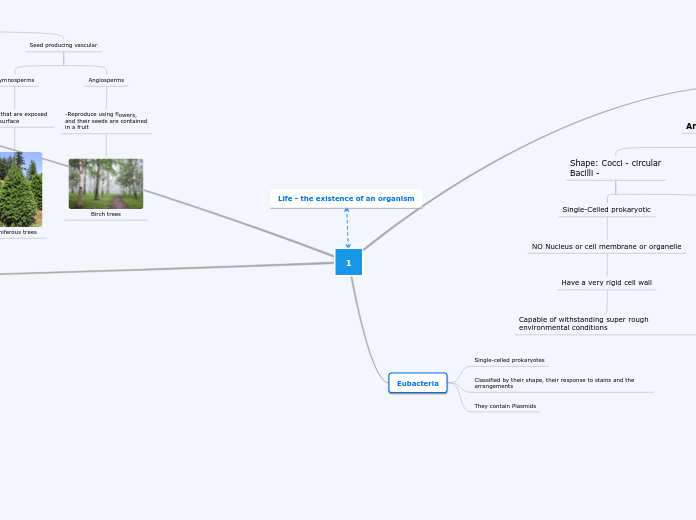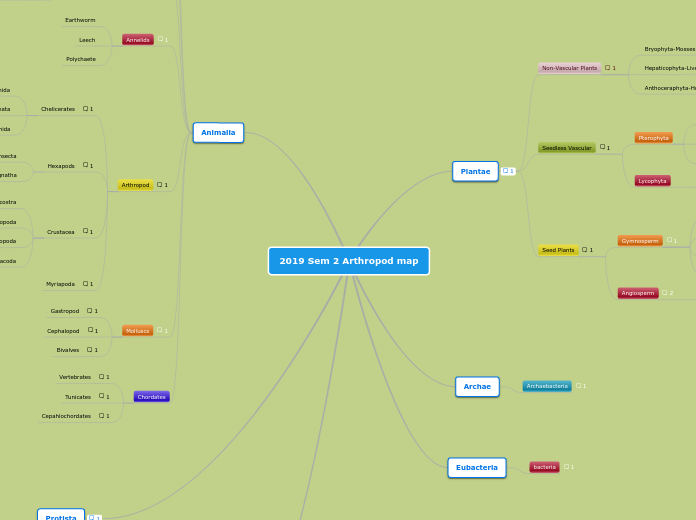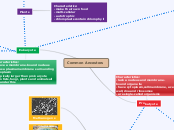Prokaryotes
Scarlett Barreto
Ecological Interctions
Parasitism
parasite lives on or in another oranism or host, causing some harm.
Commensalism
association between two organism in which one benefits and the other derives neither benefit or harm
Mutualism
beneficial to both organisms involved
Symbiosis
interaction between two different organisms living in close physical association.
Biofilm
ex: plaque
bacteria in a community that covers a surface
Nutritional Categories
Metabolisim
Decomposers
decomposes organic material
Methanogens
reduces carbon dioxide to methane
Nitrogen Fixers
nitrogen is converted to ammonia
Facultative Anaerobes
makes ATP with or without oxygen
Obligate Anaerobes
Poisoned by Oxygen
Obligate Aerobes
requires oxygen to grow
Energy and Carbon Source
Photoheterotrophs
use light for energy, but not carbon dioxide as their sole carbon source
Chemoheterortrophs
obtain energy by oxidation of electron donors in their environment
Chemoautotrophs
Gets energy from the oxidation or inorganic compounds
Photoautotroph
Carry our photosynthesis
Archaea
Euyarchaeota
Korarchaeota
Thermophilic
Crenarchaeota
thermophilic or hyperthermophilic organisms
Aigarchaeota
contains microorganisms from terrestrial and subsurface geothermal ecosystems
Thaumarchaeota
embraces ammonia-oxidizing organisms from different enviroments.
Separate deep-branching phylum within archaea
Uses of Prokaryotes
Bioengineering
Bioremediation
Make Plastics
Transgenic Plants
Cloning
Lifestyles
Extremophiles
Psychrophiles
can grow in low tempratures
Alkalinophiles
survive in alkaline environments
Acidophiles
thrive under highly acidic conditions
Thermophiles
grows best at higher than normal tempratures
Halophiles
an organism that grows in or can tolerate saline conditions
Reproduction
Sexual
Transduction
carry prokaryotic genes from one host cell to another
Conjugation
DNA is transferred between two prokaryotic cells that are temporarily joined.
Horizontal Gene Transfer
movement of genes from one organism to another
Transformation
Genotype and possibly the phenotype of prokaryotic cell are altered by the uptake of foreign DNA from its surroundings.
Asexual
Binary Fission
single prokaryotic cell divides into two, then 4, and so on
Bacteria
Gram Positive Bacteria
Ex: Streptomyces (Source of many antibiotics)
include solitary species
rival the proteobacteria in diversity
Cyanobacteria
Ex: Oscillatoria
Some filaments have cells specialized for nitrogen fixation
Gram-negative photoautotrophs
Spirochetes
Ex: Leptospira
Many are free living, others are notorious pathogenic parasites
helical, gram-negative
Chlamydias
Ex: Chlamydia trachomatis
Gram negative walls
Only survive within animal cells
Proteobacteria
Epsilon
Ex: Campylobacter- causes blood poisoning
Most are pathogenic to humans or other animals
Delta
Ex: Bdellovibrios- attack other bacteria
Slime-secreting myxobacteria
Gamma
Some are pathogens (ex. Salmonella)
Includes sulfer bacteria.
Beta
Wide range of aquatic species (ex: Rubrivivax)
Nutritionally Diverse
Alpha
Associated with Eukaryotic hosts (ex: Rhizobium)
Bacterial Shapes
Spirillium
Curved or corkscrew-like spiral
Bacillus
Rod-shape
Coccus
Sperical









